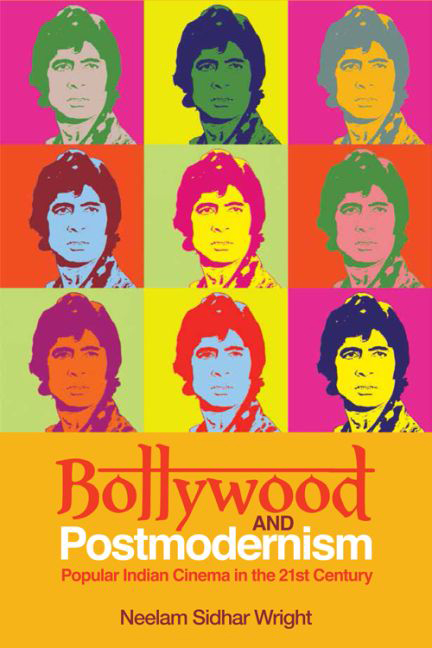Book contents
- Frontmatter
- Contents
- Acknowledgements
- List of Figures
- List of Abbreviations of Film Titles
- 1 Introduction: The Bollywood Eclipse
- 2 Anti-Bollywood: Traditional Modes of Studying Indian Cinema
- 3 Pedagogic Practices and Newer Approaches to Contemporary Bollywood Cinema
- 4 Postmodernism and India
- 5 Postmodern Bollywood
- 6 Indian Cinema: A History of Repetition
- 7 Contemporary Bollywood Remakes
- 8 Conclusion: A Bollywood Renaissance?
- Bibliography
- List of Additional Reading
- Appendix: Popular Indian Film Remakes
- Filmography
- Index
3 - Pedagogic Practices and Newer Approaches to Contemporary Bollywood Cinema
Published online by Cambridge University Press: 12 September 2017
- Frontmatter
- Contents
- Acknowledgements
- List of Figures
- List of Abbreviations of Film Titles
- 1 Introduction: The Bollywood Eclipse
- 2 Anti-Bollywood: Traditional Modes of Studying Indian Cinema
- 3 Pedagogic Practices and Newer Approaches to Contemporary Bollywood Cinema
- 4 Postmodernism and India
- 5 Postmodern Bollywood
- 6 Indian Cinema: A History of Repetition
- 7 Contemporary Bollywood Remakes
- 8 Conclusion: A Bollywood Renaissance?
- Bibliography
- List of Additional Reading
- Appendix: Popular Indian Film Remakes
- Filmography
- Index
Summary
FILM INSTITUTIONS AND REPRESENTATIVES
The supposed Western appetite for sophisticated and realistic Indian films seems to trickle down into the film festivals, which ironically claim to celebrate and raise the international profile of popular Indian cinema. For example, the offcial press release for the British Film Institute's 2007 Indian cinema now film showcase included an opening paragraph which openly rejected the ‘frivolity and glitz of Bollywood’. Even in the programme's synopses for the few contemporary Bollywood films that were selected for the festival, there was a need to include justifications for the film's unintegrated song sequences and historical inaccuracies. Furthermore, unusual choices behind the appointment of Western ambassadors for popular Indian cinema also add to the problem. In 2004, the independent Hollywood producer Ismail Merchant wrote a foreword to Dinesh Raheja and Jitendra Kothari's The Bollywood Saga, a book which aimed to celebrate and promote popular Indian cinema. But Merchant's firm Western base and history of producing elegant Western period dramas made him an unusual spokesperson for Bollywood cinema, and in his foreword he in fact criticises ‘the glut of such formalised entertainment without variation in style or substance [which] may soon alienate all but the most jaded of cinema-goers’ (Merchant, cited in Raheja and Kothari: 10-11). Merchant goes on to warn against Bollywood's dangerous over-production and its over-hyped films, and he suggests that instead of copying from the West, it is ‘imperative’ that Bollywood filmmakers instead learn from world cinema.
Correspondingly, auteur Satyajit Ray has been a long-standing representative of Indian cinema in the West, despite his distinctively European film style and lack of popularity with the mass Indian audience. Ray's high international profile has proved an obstacle for Indian popular cinema, particularly given his condemnation of popular Hindi films. In his 1976 essay ‘What is wrong with Hindi films?’ Ray suggested that popular Indian films had in some ways become a source of shame. He blamed the negative influence of American cinema, which depicted a way of life ‘so utterly at variance’ (22) with that of Indians, and instead presented Italian neo-realism as a positive role model, arguing that it would be impossible for India ever to achieve Hollywood's high-tech polish.
- Type
- Chapter
- Information
- Bollywood and PostmodernismPopular Indian Cinema in the 21st Century, pp. 46 - 62Publisher: Edinburgh University PressPrint publication year: 2015



